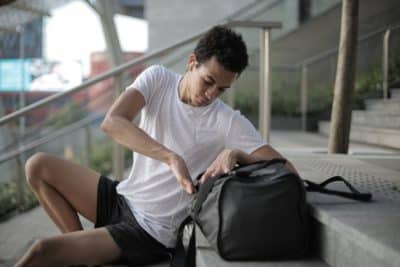Being a university student is a tough challenge on its own. There’s a big academic load to bear, with high standards to meet to graduate. But what about when athletic goals are added to the mix? In the case of Marc Stocco of Surrey, BC, he adds “athlete” to his student title as a member of the University of the Fraser Valley, men’s baseball team. He knows how much effort and sacrifice goes into maintaining academic standing while also performing at his best as a pitcher for his varsity team.
Firstly, there’s a growing financial burden. While completing a degree in four years or less is ideal to limit student debt, only about 41% of college students south of the border achieve this. Meanwhile, without financial assistance or a scholarship, the steadily rising cost of tuition and books can be off-putting for Canadians.
At the same time, trying to juggle a schedule of studying and practicing leaves little room for a part-time job to help offset some of the costs. Of course, there’s the chance of being drafted by a professional team and earning a larger salary. However, statistics from the NCAA show that among its close to 500,000 athletes), only a small percentage go pro.
IMAGE: PEXELS
More Than Money Challenges For Student-Athletes
But the challenges of being a student-athlete go far beyond money, says Marc Stocco. It’s also about finding the right balance between an academic and athletic schedule (as well as finding time to socialize), he explains. Oftentimes, the demands on the athletic side mean training, practicing, and of course, competing, which can take focus away from academia.
The end result is that grades suffer, meaning the student-athlete is less likely to leave the school holding a diploma. Also, low grades (or not being enrolled in enough classes) can also mean the student becomes academically ineligible to play for their sports team. However, the rules for this can vary by institution.
With this said, time management is one of the biggest hurdles for student-athletes. Both the professors and the coaches expect a certain commitment from the start, and it can be easy to get pulled in one direction or another (although student-athletes often gravitate towards their sport).
Meeting academic deadlines for projects or papers can mean having to arrange for the deadline to be moved, which isn’t always realistic. So it often comes down to sacrificing personal time to get ahead of the workload.
Finding the time to eat healthily is important for the function of students and in the case of student-athletes, arguably more important as a healthy diet is important for fuel in their sporting lives. Students that also have an athletic commitment are often scrambling to feed themselves, which can mean leaning on fast food occasionally.
Add to this the cost of healthy food, and it’s easy to see why eating properly can suddenly become a bigger issue for a varsity athlete. One way Marc Stocco gets around this is by planning meals ahead of time, so he knows how much to budget and what ingredients are needed.
He also carries around energy-boosting snacks such as protein bars as well as fruits to fill the gaps between meals or when he doesn’t have the time to prepare a meal from scratch. Then there’s sleep — while some student-athletes are staying up longer to try and meet academic requirements following a practice, many are missing out on the recommended seven to eight hours of sleep, a deficit that can affect both brain function and physical health.
Coping With Stress Is A Factor
Add these stressors together, and it can be not easy to remain emotionally stable as a student-athlete. With financial burdens and academic demands coupled with lack of sleep or improper nutrition, some student-athletes find it increasingly difficult to cope.
The pressure of student life can be a motivator to try harder, but on the other hand, there’s a delicate balance to avoid becoming burnt out. Studies have also shown how expectations combined with other stressors are leading to a higher number of mental health issues for post-secondary students.
While a healthy social life is one way many students unwind and relieve some stress, current times have made socializing with friends a lot trickier. Physical distancing protocols mean gathering is not always an option. And even in “normal” times, finding spare time to hang out with colleagues is often unrealistic, says Marc Stocco.
While there’s a lot of demand mentally and emotionally, being a student-athlete also means there’s a higher chance of injury. Practicing and competing can lead to strains, sprains, and even broken bones or concussions. In the case of concussions, it can take weeks or months to recover from and there could be lingering effects.
Marc Stocco On Opening Up About Barriers
Being a varsity athlete is not always very conducive to opening up about challenges, explains Marc Stocco. There’s a certain expectation of toughness and resilience among the athletes, which can lead some students who are struggling to bottle it up. However, while discussing challenges can be a challenge in itself, it’s important to seek out any school resources such as counselors or peer support that can help students through rough patches.
Remember why you became a student-athlete in the first place — it’s likely because you love your sport of choice and hope to pursue it. But also give yourself some space to avoid becoming overwhelmed, even if that means shifting around your schedule to give yourself some breathing room. With the right approach and supports, being a student-athlete can be an advantageous experience, concludes Marc Stocco.
If you are interested in even more lifestyle-related articles and information from us here at Bit Rebels, then we have a lot to choose from.


COMMENTS